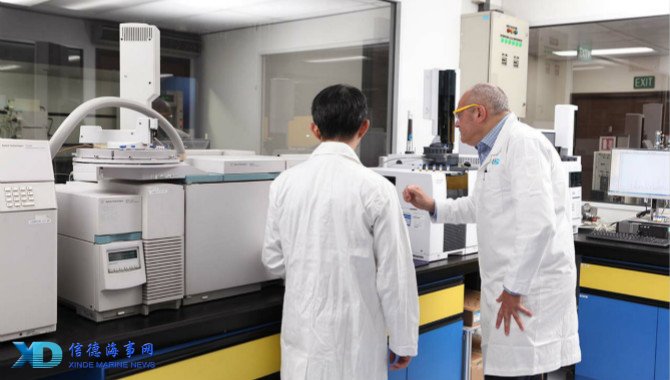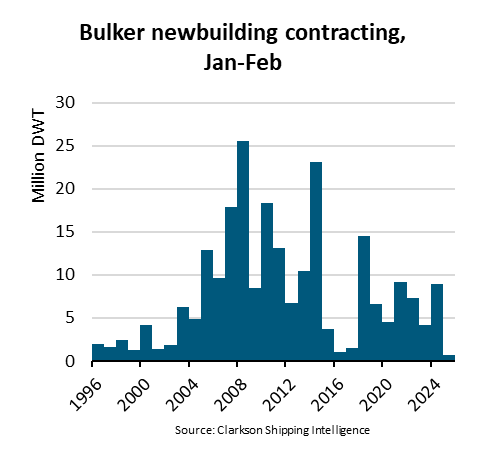
VPS Technical Focus: To GCMS, or not to GCMS – why does results take so much time?
The following article has been written by Dr Malcolm Cooper, the Group Managing Director of marine fuel testing and inspection agency Veritas Petroleum Services (VPS) explaining to Manifold Times readers the difference between various GCMS methods and their ability to detect contaminants in marine fuel:
Gas Chromatography – Mass Spectrometry (GC-MS) is a powerful analytical technique used in forensic analysis and drug testing because it detects organic compounds at very low levels with a high degree of confidence. The GC separates the fuel into individual organic compounds and the MS produces a fragmentation pattern for each compound. This pattern is a unique fingerprint that may be compared to a database of known organic compounds (typically 100,000 compounds) enabling each compound to be identified to a high degree of certainty. Although there are a range of techniques used for detecting contaminated fuels (FTIR, ICP, microbial contamination for distillates, etc) GCMS is the most suitable for detecting organic compounds.
VPS has recognised the power of the GCMS technique and we currently own a total of seven GCMS systems located at our four labs that are used to test bunker fuel. We have been using GCMS to test bunker fuels for 20 years and this history has enabled us to create a vast library of compounds that we have identified, which we can link to a variety of engine problems.
When a vessel reports engine problems using fuel that meets the standard ISO8217 tests, we attempt to identify the presence of organic contaminants using forensic investigation techniques because at this stage the contaminants are unknown. Since marine fuels are a complex mixture of hydrocarbons and in order to identify specific organic contaminants to a high level of confidence, samples are pre-treated prior to analysing by GCMS, with the aim of removing as much of the hydrocarbon matrix as possible to prevent interference.
VPS uses a range of sample pre-treatment methods detailed below including headspace, vacuum distillation, acid extraction, esterification and others. The choice of sample pre- treatment method depends upon the type of organic contaminant being detected and relies upon the experience and knowledge of the chemist. These sample pre-treatment methods can take much longer than the actual GCMS analysis but are essential in producing high quality results.
The headspace method involves heating a sample of marine fuel in a sealed vial then taking some of the headspace gas above the liquid and injecting this onto the GCMS. This method eliminates the higher boiling hydrocarbon fraction of the oil preventing interference. It provides qualitative analysis of relatively volatile organic contaminants. In our experience this covers around 70% of all organic contaminants that we have seen over the past 20 years and this is therefore the most useful method for screening for organic contaminants.
The vacuum distillate method involves distilling a fraction of the marine fuel under vacuum to take a cut of the oil and injecting this onto the GCMS. This method separates the vacuum distillate fraction and targets semi-volatile organic contaminants within the distillation range to provide a semi-quantitative analysis of the contaminants.
The acid extraction method involves a manual liquid-liquid extraction step, which can take several days due to the fuel combining to form a single phase with the aqueous extraction solution. This method specifically targets organic contaminants that are organic acids and not volatile. It is very sensitive and selective to all acidic contaminants (such as all phenols, fatty acids, etc. including all volatile and non- volatile contaminants).
It is the sample pre-treatment method undertaken prior to the GCMS that is the rate- determining step in the process. An appropriate sample pre-treatment method is essential in producing high quality results, and the methods used by VPS have been developed and applied over many years, providing a high degree of confidence in our results.
The acid extraction sample pretreatment method that VPS uses is highly selective for all organic acids and uses a classic liquid-liquid extraction method which takes a long time. It is very sensitive and selective to all acidic contaminants (such as all phenols, fatty acids, etc. including all volatile and non-volatile contaminants).
There are other sample pre-treatment methods available which are not as sensitive or selective and therefore do not provide such a high level of confidence in the results.
Photo credit: Manifold Times
Published: 26 October, 2018
Sources:Manifold Times
Please Contact Us at:
admin@xindemarine.com


 Ningbo Containerized Freight Index Weekly Commentar
Ningbo Containerized Freight Index Weekly Commentar  Ningbo Containerized Freight Index Weekly Commentar
Ningbo Containerized Freight Index Weekly Commentar  Ningbo Containerized Freight Index Weekly Commentar
Ningbo Containerized Freight Index Weekly Commentar  BIMCO Shipping Number of the Week: Bulker newbuildi
BIMCO Shipping Number of the Week: Bulker newbuildi  Ningbo Containerized Freight Index Weekly Commentar
Ningbo Containerized Freight Index Weekly Commentar  Ningbo Containerized Freight Index Weekly Commentar
Ningbo Containerized Freight Index Weekly Commentar